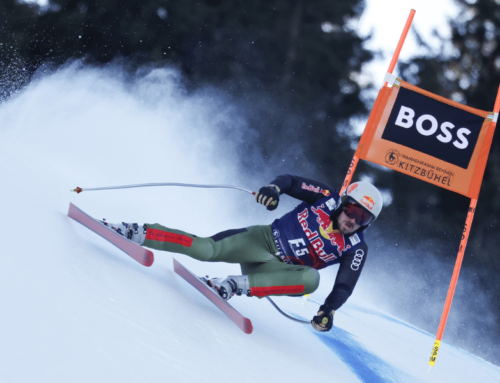Work begins on women's Olympic speed venue
Work begins on women’s Olympic speed venue Work has begun on the slope at San Sicario, Italy, where the women’s Olympic downhill and super G will be held in February. Olympic officials are adjusting the contours of the hill in order to make it more challenging.
Work has begun on the slope at San Sicario, Italy, where the women’s Olympic downhill and super G will be held in February. Olympic officials are adjusting the contours of the hill in order to make it more challenging.
Ski Racing toured the venue with Olympic officials on July 13, as workers for the Olympic broadcasting team moved buried television cables in preparation for bulldozer work on one of the track’s main jumps.
In February the venue drew sharp criticism from top athletes, who said that the track wasn’t dramatic enough for the Olympics. Their orchestrated complaints came at the official final test event for the Games, a World Cup super G and downhill.
‘We will give the jumps a new profile, and it will be spectacular’ said Gianni Poncet, the competition manager for the Torino Olympic Organizing Committee (TOROC), who gave Ski Racing a tour of the slope last week.
Using bulldozers and surveying equipment, officials from TOROC and the International Ski Federation (FIS) will enhance the track’s three biggest jumps, shaving dirt from the lead-ins and steepening the landings.
They also plan to re-direct the course against a new sidehill below the Marmotta jump, sharpen some rollers below that, and straighten one part of the ‘S Turn’ in the narrows approaching the finish, sending athletes over a new jump that will be built with snow, not dirt.
‘We hope to make it four to six degrees steeper on the other side of the jumps’ said Poncet. ‘After this we will have very good terrain.’
In February, top-ranked skiers complained that the super G course was boring for the athletes and spectators. Generally the skiers were happy with the downhill, but disliked the super G (which began lower, and never reached high speeds).
Michaela Dorfmeister of Austria and Hilde Gerg of Germany were especially vocal, while Sweden’s Anja Paerson, who won both races, mostly avoided the controversy.
In their defense, race organizers pointed out that extremely cold temperatures contributed to the slow speeds, as sharp snow crystals increase friction between the snow and ski bases.
Poncet points out that in the weeks following the event, San Sicario hosted Italy’s junior national championships, and less-skilled racers were reaching higher speeds and finishing much faster on a similar track. ‘It’s normal for the snow to change’ says Poncet. ‘It’s normal to have sunshine, and I think it’s possible to have 115 kilometers per hour.’
At the end of the season, the top 15 athletes submitted a petition to have the women’s speed events moved to Sestriere, the village up the road. Sestriere will be home to the men’s Olympic races, and well as women’s technical events.
Italian racers chose not to participate in the campaign to move the race. Lindsey Kildow, the top American female racer last year, signed the petition.
In June, the athletes’ campaign apparently came to an end as Jean-Claude Killy declared that the decision to keep the women’s race in San Sicario would be final. The triple-gold medal winner at the 1968 Olympics in Grenoble, Killy heads an IOC commission watching over Torino’s preparations.
For more details about how the Olympic skiing venues are coming together, make sure to read the first print issue of Ski Racing magazine, due in mailboxes in late August. To subscribe, click here.





















